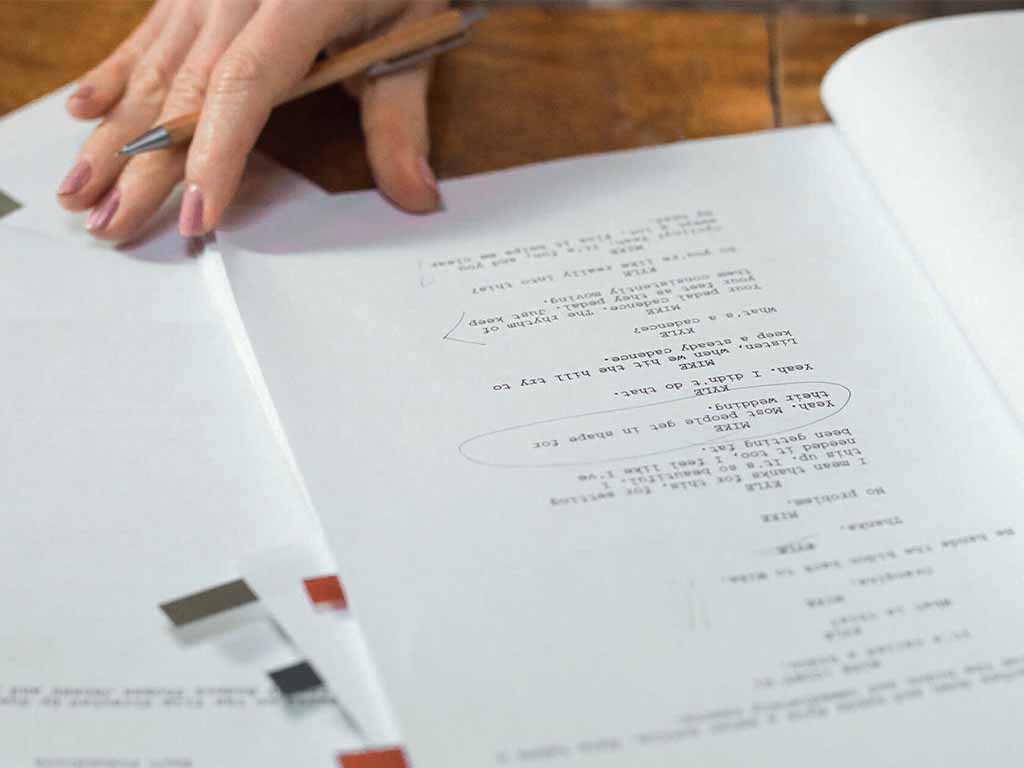
In today’s fast-paced, digital-first world, videos are more than just an entertainment medium; they’re the key to a brand's connection with its audience. High-quality videos are crucial for driving engagement, building brand identity, and converting prospects into loyal customers. However, producing a successful brand video isn't just about having the best camera equipment—it's about creating a narrative that resonates with your target audience and aligns with your marketing goals.
Whether you're crafting a short social media clip, a product explainer, or a full-scale commercial, the journey from concept to screen requires careful planning, creativity, and execution. In this ultimate guide, we’ll walk you through the essential steps of producing impactful brand videos.
Creating impactful brand videos isn’t just about high-quality visuals—it’s about crafting a narrative that resonates with your audience and drives them to take action
1. Define Your Video Goals and Objectives
The first and most critical step is understanding why you're creating the video in the first place. A clear set of objectives will guide the entire production process, from scripting to distribution.
Key Questions to Consider:
- What is the primary purpose of the video? Is it to raise
awareness, educate,
entertain, or convert? Knowing your video’s purpose is essential for determining
the tone and content.
- Who is your target audience? Understand their interests,
challenges, and where they
consume content to ensure your video resonates.
- What is the core message? What do you want viewers to take away
from the video?
Ensure your message is concise and memorable.
- What action do you want them to take? Whether it’s making a
purchase, signing up, or
sharing the video, ensure the video ends with a strong call-to-action (CTA).
By clarifying these goals, you can tailor every element of the video to serve your desired outcome.
2. Know Your Audience
A video that speaks directly to the needs and preferences of your audience will have the most significant impact. Start by creating detailed buyer personas to understand who you're speaking to and what resonates with them.
Steps to Building Your Buyer Persona:
- Demographics: Age, gender, location, income, occupation, etc.
- Psychographics: Hobbies, values, and personality traits.
- Content Preferences: What kind of content does your audience
engage with? Is it
long-form content or short-form videos?
- Challenges & Pain Points: Understand the problems your audience
faces and how your
product or service solves them.
3. Conceptualise the Video
Now that you have clear objectives and a defined audience, it's time to conceptualise the video. This is the creative phase where you determine the overall direction of your video, including its style, tone, and format.
Tips for Creating the Video Concept:
- Tone and Style: Will the video be serious, humorous, inspiring,
or educational? The
tone should reflect your brand’s personality and align with your target
audience's
expectations.
- Format and Length: Decide whether you want to create a
live-action video, animation,
or a hybrid of both. Consider how long the video should be—attention spans are
short, so focus on keeping it concise.
- Storytelling Approach: Focus on creating a narrative that
captures attention and
guides viewers toward your core message. Even if your video is brief, it should
still tell a compelling story.
- Visual and Audio Elements: Choose visuals, music, and sound
effects that complement
the story. The right soundtrack can significantly enhance the emotional impact
of
your video.
4. Write the Script
The script is the backbone of any video production. A well-written script will ensure your video delivers the intended message clearly and effectively. Whether you're collaborating with a professional copywriter or writing it yourself, here are a few pointers:
Key Elements of a Good Script:
- Hook: Start with an engaging hook in the first 5 seconds. This
could be an
intriguing question, a surprising statistic, or a powerful statement that
immediately grabs attention.
- Core Message: Be clear about your main point. Avoid
overcomplicating things and keep
the language simple, direct, and engaging.
- Call to Action (CTA): A video without a CTA is like a road
without a signpost.
Always include a clear CTA that guides viewers on what to do next—whether it’s
visiting your website, downloading a resource, or making a purchase.
- Length and Pacing: Keep your script concise. Shorter videos are
typically more
effective, so ensure every second counts.
The script should align with your objectives, engage your audience emotionally, and be crafted in a way that encourages the viewer to act.

5. Plan the Production
Once your script is locked in, it’s time to plan the actual video shoot. This phase involves organising the logistics, securing locations, and determining the equipment needed for filming.
Key Elements of Production Planning:
- Budgeting: Make sure you’re clear about your budget. Consider
all costs involved,
including equipment, talent, locations, post-production, and promotion. A clear
budget will help you make informed decisions about what’s possible.
- Location and Set Design: Where will you shoot the video? Will
you need a studio,
office space, or an outdoor setting? Plan the set and ensure it aligns with the
tone
of your video.
- Casting and Talent: If your video requires actors, hosts, or
presenters, casting is
a crucial step. Choose talent that represents your brand and connects with your
audience.
- Equipment: Depending on your budget, you may need cameras,
lighting, sound
equipment, and props. Even if you have limited resources, there are many tools
available that can still deliver high-quality results.
- Storyboarding: Creating a storyboard helps you visualise the
flow of the video, shot
by shot. It ensures that nothing is missed during filming and that each scene
supports your narrative.
Proper planning reduces stress and makes the production phase more efficient.
6. Filming the Video
With everything in place, it’s time for the actual filming. Filming a video involves more than just hitting "record"—it’s about making every shot count and ensuring the production quality meets your standards.
Tips for a Successful Filming Process:
- Lighting: Good lighting is essential for high-quality video.
Use natural light or
professional lighting equipment to achieve the best visual results.
- Sound: Clear, crisp audio is just as important as high-quality
visuals. Use
professional microphones and monitor the audio during the shoot.
- Camera Angles: Use a variety of angles to keep the video
visually interesting.
Remember, dynamic camera movement can help keep the audience engaged.
- Directing Talent: If your video features actors, make sure they
understand the tone
and emotion you want to convey. Work with them to ensure their performance
aligns
with the overall message.
The key is to be organised and patient. Film multiple takes and keep reviewing the footage to ensure consistency and quality.
7. Editing the Video
Post-production is where your video truly comes to life. Editing is more than just cutting footage together—it’s about fine-tuning every aspect of the video to enhance its message and impact.
Key Steps in Video Editing:
- Pacing and Flow: Ensure the video flows smoothly from beginning
to end. Edit the
footage for maximum engagement by trimming unnecessary parts and maintaining a
steady rhythm.
- Sound Design: Layer in background music, sound effects, and
voiceovers. Ensure the
sound complements the visuals and doesn’t overpower the message.
- Visual Effects and Graphics: Add graphics, text, and animations
to emphasise key
points. Make sure they match the brand’s style and tone.
- Colour Grading: Use colour grading to give the video a
professional, polished look.
The right colour scheme can also enhance the emotional tone of the video.
Editing is where all the magic happens, so take your time to perfect it.
8. Distribution and Promotion
Once your video is ready, it’s time to get it in front of your audience. Distribution and promotion are crucial for maximising the impact of your video.
Distribution Channels to Consider:
- Social Media: Leverage platforms like Instagram, YouTube,
Facebook, and TikTok to share your video. Tailor your approach for each platform
based on its audience and content style.
- Website: Embed the video on your website, especially on key
landing pages or product
pages.
- Email Marketing: Send your video to your email list to increase
engagement and drive
traffic.
- Paid Ads: Run paid video ads on social platforms to extend your
reach.
Video Promotion Tips:
- SEO Optimisation: Optimise your video title, description,
and tags with relevant keywords to improve discoverability.
- Collaborations: Partner with influencers or industry
leaders to extend your video’s
reach.
- Engagement: Ask viewers to like, comment, and share.
Engaging with your audience can
boost the video’s visibility.
Conclusion
Creating impactful brand videos is a multifaceted process that requires strategic planning, creativity, and technical expertise. By following these steps—from defining your goals and audience to shooting, editing, and promoting your video—you can craft content that not only resonates with your target market but also drives measurable results.
Remember, video content is a powerful tool, but only if it’s executed with care and precision. Whether you’re looking to boost brand awareness, increase conversions, or simply engage your audience, the key to success lies in producing a video that reflects your brand’s identity, resonates with viewers, and calls them to action.
If you're ready to take your brand video to the next level, contact Cineworx to start crafting your next impactful production.





